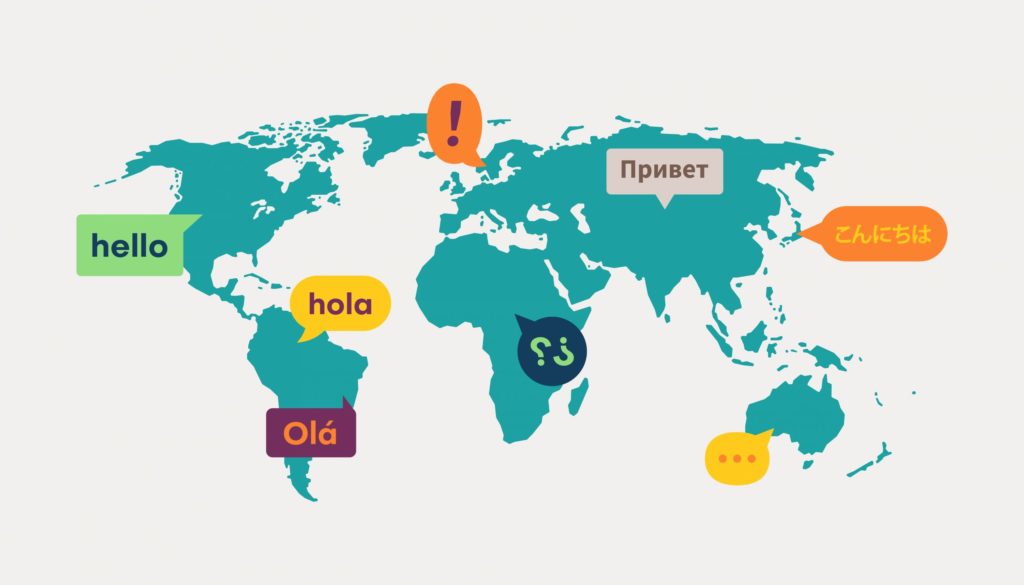“If you differ from me, my brother, far from harming me, you enrich me.” – Antoine de Saint-Exupéry, aviation pioneer, writer and poet, 1900 – 1944
Over more than three decades working internationally as an engineer, project manager, trainer and coach, one of the major things that I have observed is the importance of the language barrier, particularly from a “Discounting level 1 & 2” point of view.
As a reminder, here are the Transactional Analysis Discounting levels again (from the previous blog post):
- Not registering that a problem exists
- Not registering the significance of that problem
- Not registering that there are options for action [to solve the problem]
- Not registering that one is personally capable of implementing those actions [to solve the problem]
We also identified three main barriers to effective virtual global teamwork:
- Language barrier
- Distance / time zone barrier
- Human aspect / cultural barrier
Today, we will concentrate on the language barrier. We will run it through Discounting Analysis, moving from problems to solutions. We will also take a step further and leverage advantages to enhance effectiveness.
Our aim is to evaluate our proficiency and that of our counterparts. We can then make any needed improvements to our own techniques and, as Project Managers, help team members and other stakeholders to progress in proficiency.
The Language Barrier
Levels 1 & 2 – Problem and Significance
To work together, we need to communicate, to “speak the same language”. Yet, around seven thousand languages are used around the world today.
Over time, we have found solutions to this problem. The use of a lingua franca is one. In order to understand each other, the contemporary use of English is common in international communication. And that is the trap! Thinking that (a) speaking English solves all problems and (b) those who do speak English truly understand each other!
- Only around 20% of the world’s population speak English (as a first or second language). This distances 80% of potential co-workers. The significance of this problem is clear.
- A more subtle problem exists: registering issues between users of English. Of the global 20% of English speakers, around one-fifth speak English as their first language. For the other four-fifths, English is a secondary language or is present in their country. For less-proficient practitioners, it is obvious that care must be taken to ensure correct communication when using English internationally. However, amongst fluent practitioners, frequently no such caution is observed. International audio meetings filled with, “full speed ahead”, jargon-rich English spoken with strong accents are common. Less fluent participants try hard to follow, with difficulty. It is often clear that some practitioners have not registered that a problem exists. “This meeting is in English, we are speaking English, so there’s no problem, right?” Unfortunately, very, very wrong!
The cultural personality iceberg – above and below the waterline
Above the waterline, we see the “what”. Observable issues of international communication are often in plain view: puzzled expressions, mistakes, incomprehension and unexpected unwanted deliverables, sometimes months later, are common.
Below the waterline lies the “why”. We would all like to communicate using English confidently and with ease. However, if we subjectively judge that our level of English is “inadequate”, we may be tempted to stay silent to hide our self-perceived “incompetence” and “save face”. The importance of “saving face” is particularly important in certain cultures. “Low-face-importance” cultures assume that anyone not understanding will interrupt to clarify. “High-face-importance” cultures assume that it is clear that doing so would induce a loss of face and is therefore not a viable possibility…
Levels 3 & 4 – Options and Actions
When using English to communicate:
- We use easy words and short, clear sentences. The simpler, the better
- We articulate clearly and take our time to speak. We use full words rather than joining two words together: “I am an engineer” is clearer than “I’m an engineer”
- We use Latin root verbs instead of Germanic root verbs: “I will obtain the contract” is clearer than “I’m going to get the contract” for many non-native English speakers
- We borrow best practices from international aviation communication:
– we use the international alphabet (alpha, bravo, charlie, etc.) to spell-out difficult words
– we use individual digits to clarify numbers: “one-four” is clearer than “fourteen”
– we confirm key elements by repetition: Person A: “Please supply fourteen (one-four) samples tomorrow.” Person B: “We will supply fourteen (one-four) samples tomorrow.” - We use regular pauses and “sign posting” to allow speaking partners to easily follow the conversation: “I will now talk about X [I deliver message X] “I have talked about X and will now talk about Y” [I deliver message Y]
- We prefer nouns to verbs: “Who is your Manager?” is easier to understand than “Who do you work for?”
- We avoid phrasal verbs: “call off”, “go back” and “shop around” – completely confusing!
- We avoid question-tags: “you do understand, don’t you?” – even more confusing!!
- We are careful with humour as cultural norms for humour in business vary widely. A well-intentioned humoristic comment may be misunderstood and cause unwanted confusion. It may also produce a negative effect for cultures for which the norm is to keep humour for outside of office hours…
- Most importantly, all nationalities, particularly native English speakers, must make efforts to adapt their speech with the one common goal of facilitating mutual understanding
When some parties have a very basic level of English (or do not speak English at all):
- Support from a professional translator/interpreter is of great value, allowing swifter communications and fewer expensive misunderstandings and mistakes. Language support from multi-lingual colleagues is also useful. When using translation/interpretation software, we are aware of the risk of incorrect translations
- A picture is worth a thousand words! Images, drawings and sketches boost mutual understanding
- Written communications allow time for translation and understanding. They can, however, lead to “conversations” which take many days and still end in confusion
- A way to improve on this is to write and talk at the same time: during an audio meeting, as one is speaking, one writes key words and figures on-screen to provide anchors for understanding
- We plan regular follow-up meetings: daily status points to check that progress made is according to understandings. This allows misunderstandings to be identified and corrected early
For all interactions:
- We reduce “loss of face” risks by clearly stating our aim of mutual understanding and the use of “less-than-perfect English” as the communication norm
- We reinforce openness by allowing time for people to build relationships and confidence
- We continuously monitor speaking partners to detect non-verbal signs of confusion or disagreement
- We ensure that all people contribute to the conversation by bringing in members with a tendency to stay silent (perhaps due to a difficulty to interrupt to enter the conversation)
- For important decisions, a written record of agreements is made during the conversation, in real-time. Participants confirm and approve the record post-meeting.
Building Strong Foundations
Our efforts to address the language barrier will obviously bring immediate benefits in improved understanding between global team members. Also, as a collateral benefit, the care, energy and good will that we transmit through our efforts to understand and be understood will be noticed by our counterparts. This tangible good will builds trust and good working relationships, particularly between cultures and at a distance.
We will build on this strong foundation in the next and final blog focused on the distance barrier and human aspect/cultural barrier.
Until then, take care and don’t hesitate to share your experiences or highlight any questions.
Peter
For further details, see “Foolproof International Communication”, Moberg & Chadwick, Japco Publishing House 2013, ISBN 978-91-637-1116-9, 2013
 About the Author
About the Author
Peter Chadwick is the Founder of Island Hoppers, and a Trainer and Consultant with IIL. He is qualified as an engineer, project manager, trainer, coach and pilot.
The common threads to Peter’s career are innovation and exploration. From early days dreaming-up designs, through roles leading larger and larger international project teams, up to his current role of trainer and coach, Peter constantly searches for better designs, better ways of working.
Building on his research and in-the-field experience, he has co-authored two books on transcultural cooperation with Pia Moberg and devised the Chadberg Model.
Peter has a long track record of designing and facilitating pragmatic support to individuals, teams and organisations – harnessing the power of international collective intelligence.


